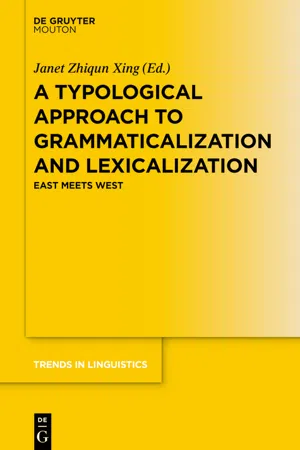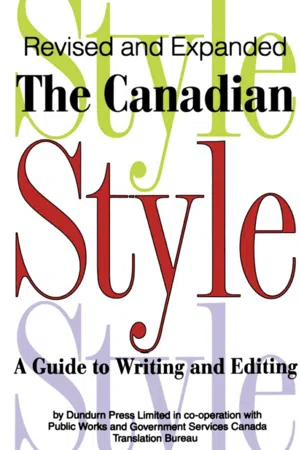Languages & Linguistics
Compound Adjectives
Compound adjectives are formed by combining two or more words to modify a noun. They are often hyphenated and can be used to convey specific meanings or qualities. In linguistics, compound adjectives play a crucial role in describing language features and structures, and they contribute to the richness and precision of language expression.
Written by Perlego with AI-assistance
4 Key excerpts on "Compound Adjectives"
Learn about this page
Index pages curate the most relevant extracts from our library of academic textbooks. They’ve been created using an in-house natural language model (NLM), each adding context and meaning to key research topics.
- eBook - ePub
- José Ignacio Hualde, Antxon Olarrea, Erin O'Rourke, José Ignacio Hualde, Antxon Olarrea, Erin O'Rourke(Authors)
- 2012(Publication Date)
- Wiley-Blackwell(Publisher)
We may define compounding as a word-formation process by which two or more lexemes combine to constitute a complex word, which is a lexical unit from a semantic, phonological, and functional point of view. For instance, the noun lexeme pel - ‘hair’ followed by the linking element - i - and the adjective lexeme roj - ‘red’ combine to form the adjective compound pelirrojo ‘red-haired.’ By lexeme, we understand here not only uninflected forms of independent words, as the stems pel - and roj - of the example above, but also the so-called learned stems of Greco-Latin origin. In fact, all Romance languages have continued to produce “neoclassical compounds” by means of these components, combined either among themselves (logopeda ‘speech therapist’) or combined with an actual word of the language (panamericanismo ‘Pan-Americanism’). Compounding by means of Greco-Latin stems is special in respect to its constitution. When two of these constituents combine together, the origin of the second one determines the kind of linking vowel appearing between them: if the second stem is of Greek origin, the linking vowel is usually - o - (mare-ó-grafo ‘tide-graph’); if the second constituent is of Latin origin, the linking vowel is in general - i - (gran-í-voro ‘grain-eater’). Another peculiarity of this kind of compounding is that with A compounds denoting nationalities, the last adjective appears in its native form and the rest of the adjectives in their learned or Latin form: hispanofrancés ‘Hispanic-French’/ francoespañol ‘French-Spanish.’ The lexical categories that enter into compounding are the major ones: V, N, and A. There are also a few cases where Adv(erb) appears as a compound constituent, either modifying a verb (malvender ‘to sell off cheap,’ malgastar ‘to waste’) or a deverbal adjective (bienhablado ‘well-spoken,’ malnacido ‘badly-born’ = ‘obnoxious’) - eBook - ePub
Navigating English Grammar
A Guide to Analyzing Real Language
- Anne Lobeck, Kristin Denham(Authors)
- 2013(Publication Date)
- Wiley-Blackwell(Publisher)
7
Adjectives
Introduction Adjective Semantics Adjective MorphologyDerivational affixation and other ways we form adjectivesParticipial adjectivesInflectional affixation: comparative and superlative adjectivesAdjective SyntaxModifiers of adjectivesPrenominal and postnominal adjective phrasesAdjective phrase subjective complementsSummary ExercisesIntroductionSo far, we have discussed the categories NP and VP in some detail, paying particular attention to the English verb system, and the basic structure of the clause (CL). In the next three chapters we explore the remaining lexical categories in English, Adjective and Adverb. We will also discuss the category Preposition, whose identity as a lexical category is a bit fuzzy; prepositions actually share certain features with functional categories.We introduced adjectives in Chapter 3 in our discussion of nouns; you may recall that adjectives head adjective phrases, or AP, and can be modified by degree words, such as very .Adjective phrases also occur in NPs like the following, occurring before the noun they modify, in what we call prenominal position:a slimy slugAs we’ll see in this chapter, adjectives (or more accurately, adjective phrases), can occur in other positions as well. They can occur after nouns in the noun phrase, in postnominal position:something slimyAnd adjective phrases can also be complements of verbs, as below:The slug seems slimy .We discuss the syntax of adjectives in some detail, examining the different positions in which we find adjective phrases, and how they function in those positions (as modifiers and as complements). We begin, however, with the semantics and morphology of adjectives.Adjective SemanticsThe semantics of adjectives is (as you might expect) quite complex. In general, adjectives (and more specifically, adjective phrases) are modifiers - eBook - ePub
- Janet Zhiqun Xing, Janet Zhiqun Xing(Authors)
- 2020(Publication Date)
- De Gruyter Mouton(Publisher)
Regarding the definition of compound, there seems to be no consensus among scholars. Just as Lieber and Stekauer (2009: 6) claim, in spite of extensive research into compounds and compounding processes, there are hardly any universally accepted criteria for determining what a compound is. The reasons why it is difficult to come up with a satisfying and universally applicable definition for compound, as Lieber and Stekauer (2009: 4) identify, are twofold. Firstly, the elements that make up compounds in some languages are not free-standing words, but rather stems or roots. Secondly, it is not always easy to make a clean distinction between compounds on the one hand and derived words or phrases on the other.The criteria for distinguishing between a syntactic construction and a compound are not well established. Possible criteria proposed so far include phonological (stress, vowel harmony, the sandhi process, tonal pattern s, vowel deletion or reduction, etc.), morphological (the behavior of the compound with respect to inflection, presence of linking elements or special formatives, the loss of syntactic dependency markers, special constituent order), syntactic (syntactic impenetrability, inseparability, and inalterability), semantic (non-compositionality, degree of lexicalization or listedness in the lexicon), and orthographic (written as a single orthographic word).1 None of these are foolproof or cross-linguistically applicable but language-specific.The study of compounds involves many aspects and issues, including, but not limited to, headedness, exocentricity, productivity, the lexical category of the constituents (and the whole compound as well). The grammatical and semantic relationships of the constituents, and thus the classification of the whole compound, along with the relationship between compounding and other morphosyntactic phenomena such as incorporation, serial verbs, phrasal verbs, and the like complicate their study as well.As a type of word formation, the process of compounding, as revealed by some recent studies such as Lehmann (2002) , Packard (2004) , Brinton and Traugott (2005) , Lightfoot (2011) , Wischer (2011) - eBook - ePub
The Canadian Style
A Guide to Writing and Editing
- Public Works and Government Services Canada Translation Bureau, Dundurn Press Limited(Authors)
- 1997(Publication Date)
- Dundurn Press(Publisher)
2.04 Compound Adjectives; adjectives and participles in compounds (a) Hyphenate adjective-plus-noun and participle-plus-noun compounds modifying another noun, when ambiguity might otherwise result:When the compound is used predicatively, retain the hyphen only when the expression remains adjectival:cold-storage vaults large-scale development crude-oil exporting countries special-interest groups The development was large-scale. His position is full-time.butDevelopment proceeded on a large scale. He works full time.(b) Hyphenate Compound Adjectives made up of two adjectives that describe a colour without the suffix ish, whether they are placed before or after the noun. Hyphenate compounds with the suffix only when they precede the noun:It was covered with blue-green algae. It was blue-green. The leaves were bluish green. The tree had bluish-green leaves.Do not hyphenate adjectives indicating a specific shade (even if they precede the noun):dark green paint a bright red dress strawberry blond hair(c) Hyphenate adjective-plus-participle compounds, whether used before the noun or after it:an odd-sounding name The name was rather odd-sounding. a smooth-talking salesman The visitor was smooth-talking.(d) Hyphenate compounds made up of an adjective plus a noun to which the ending ed has been added, in any position in the sentence:(e) Hyphenate two-word Compound Adjectives consisting of a noun plus a gerund when they precede the noun:able-bodied many-sided strong-willed short-handed the decision-making process a profit-sharing plan a problem-solving approach a tape-recording session See also 2.03 (c).(f) Hyphenate Compound Adjectives whose final constituent is an adverb of direction or place (in, out, down, up, etc.) when they precede the noun:a drive-by shooting a built-up area all-out competition the trickle-down theory



